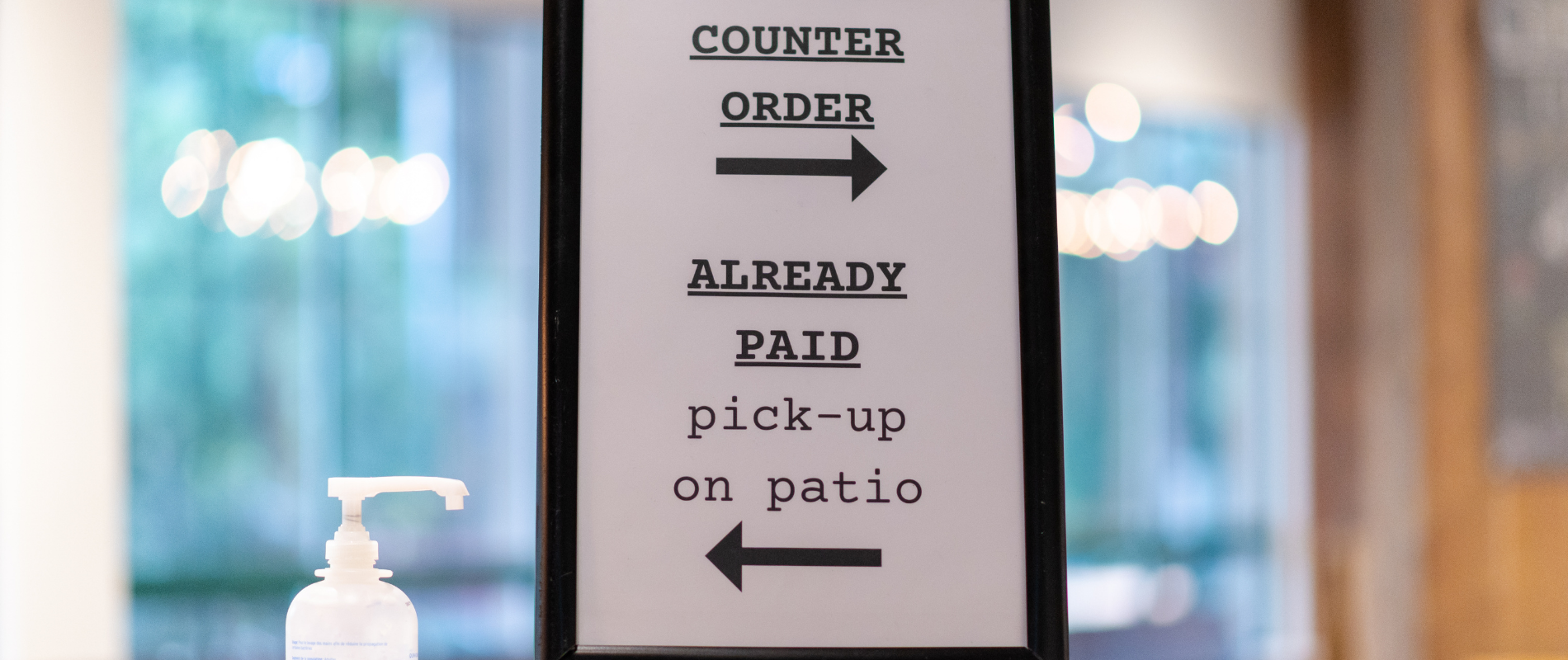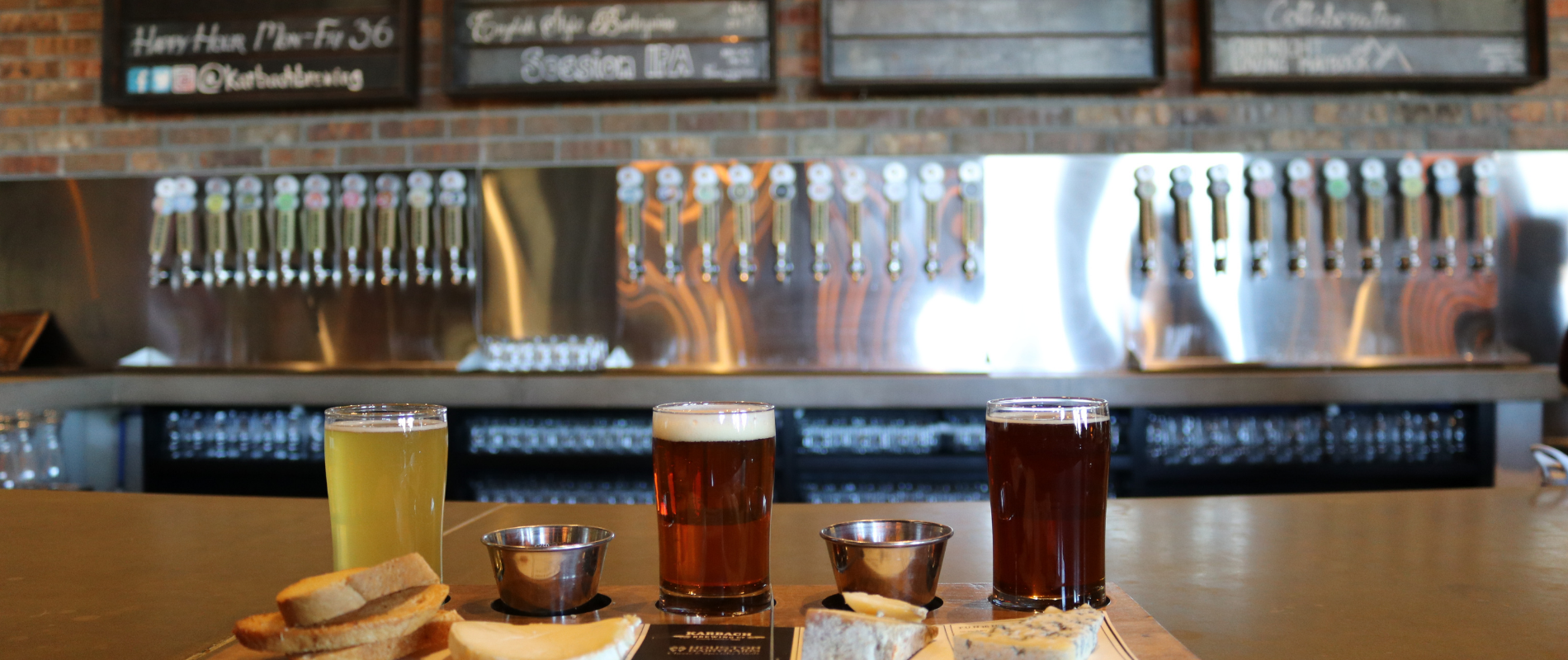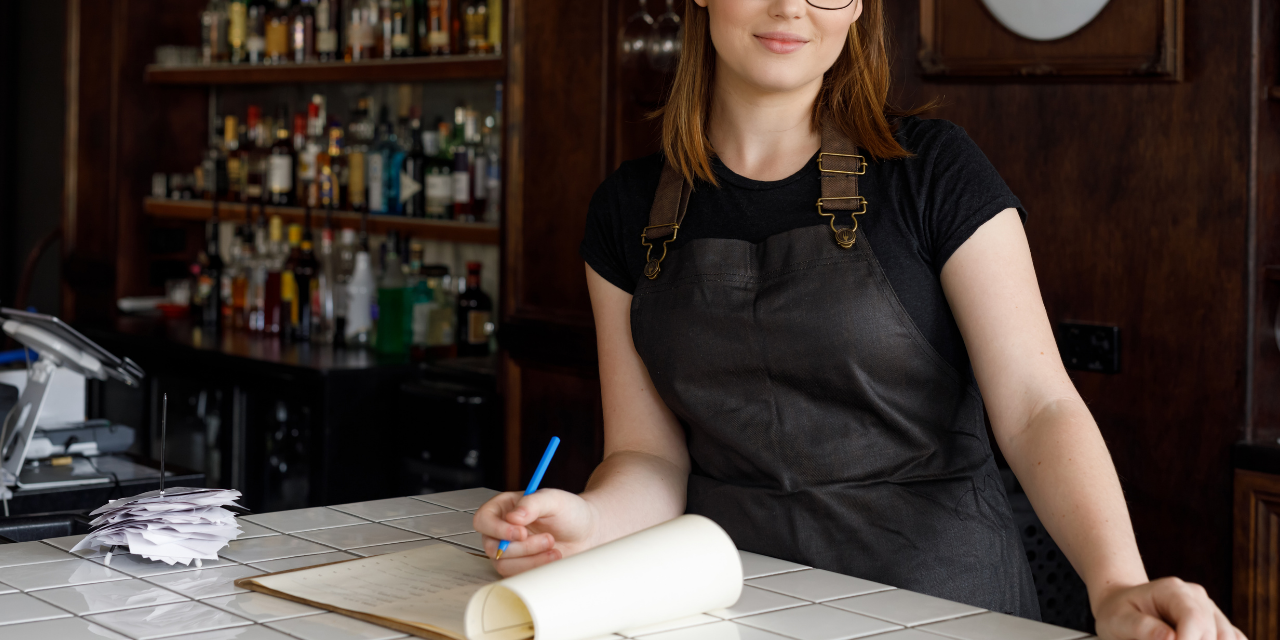During hard times, companies hunker down, lay off workers, and cut costs. All of this is necessary. After all, you have to play defense to survive. However, there’s a way to move from defense to offense.
Navigating interruptions to your business can be difficult, but for most bars or restaurants a temporary shutdown is just one of those things that will probably happen multiple times over the course of the company’s lifetime.
There’s a wide range of reasons why a restaurant or bar would undergo a temporary closure. Anything from a new construction project, a rebrand, an update to health and safety standards and many other reasons.
A temporary closure isn’t a negative thing. It gives your business time to make improvements to every aspect of your restaurant or bar - from your back-of-house processes to your front-of-house customer experiences.
However, since a temporary closure means you're no longer bringing in revenue from guests, it’s important you take some steps to protect your business and maintain a positive cash flow until you’re able to open again.
This is particularly important when taking into account that 52 percent of restaurant professionals stated that high operating and food costs are a top challenge for their business (Toast).
Managing these overheads and maintaining a healthy cash flow during a temporary closure is crucial to the survival of your company. Thankfully, there are plenty of steps that you can take to do just that.
Are you planning a temporary closure or want to prepare just in case you experience one? On this page you will find some tips, advice and resources that will ensure your restaurant is able to properly prepare for a temporary closure, reopen seamlessly, and improve profits once you do reopen.
Learn More…
How to do Cost Control in a Restaurant: When the Going Gets Tough
During hard times, companies hunker down, lay off workers, and cut costs. All of this is necessary. After all, you have to play defense to survive. However, there’s a way to move from defense to offense.

While closing your restaurant or bar is often for a positive reason, that doesn’t mean it’s not a challenging time. You probably still have inventory left in your kitchen, you have staff that might have to be temporarily laid off and you have finances that are coming to a complete standstill.
This of course is nothing new for restaurant and bar owners who continually face issues in what is a great, but challenging industry.
No matter why you have temporarily closed your restaurant or bar, the measures you need to take to make sure you are properly prepared are the same. Here are some of the most important best practices to keep in mind when preparing for your closure.
Choose a date
The first step of preparing for a temporary closure is to choose a date when your doors will shut. On some occasions this may be completely out of your hands, but where possible it’s always good to set an official date of closing to ensure you have time to properly prepare.
An official closing date will give you time to better plan your communications, sort through your food and liquor inventory and discuss any financial implications with your bank and landlord. A solid date will ensure you can build a plan that has your budget at the forefront of any decision.
Communicate with both your guests and staff members
Once you have an official date. It’s now time to make your guests and staff aware of your plans (tell your staff before you make the announcement public). Your restaurant or bar stakeholders need to know when you are closing and the reason why. Be open and honest in your communication, and in return you will be able to build trust and create more loyal staff members and guests.
You should host an in-person meeting with your staff to tell them before anyone else. Tell them as early as possible and make sure they are aware of the income they are receiving. It’s possible that you are in a position to give them full wages while you are temporarily closed, while other companies may have to temporarily lay them off and hire them back once you open again.
For guests, you will have to use your website and social media to communicate with them. Make sure they know the exact date that you are closing, the reasons behind your closure and when they can expect to be able to dine or drink in your establishment again. Social media is an essential tool today, with 77 percent of the US population currently active on social channels (Statista).
Make sure your finances are in order
Staying out of debt and ensuring your business remains ready to reopen is all about effective financial planning. That’s why it’s important that you take the time to craft a business plan with accurate financial forecasting - taking into account the period of closure where you will not be bringing in new revenue.
Create a budgeting forecast based on information, data and sales projections that are realistic. Make sure not to overestimate projected sales or underestimate your company’s expenses. Your plan should ensure that you’ll still have strong cash reserves even through your closure.
Learn More…

Without sound financial management, every business is doomed to failure. This is even more prominent when it comes to the temporary closure of a bar or restaurant, since you’ll no longer have consistent revenue streams coming into your business.
It’s crucial that you prepare properly for your temporary closure, ensuring you have enough cash flow to see you through the next few weeks or even months.
Thankfully, there are plenty of methods you can take to save money and even earn revenue that tides you over until you open again. Here are some of the most effective measures you can take to maintain a positive cash flow while your restaurant or bar is temporarily closed.
Sell your deadstock
Did you know that nearly every hospitality venue is overstocked? In fact, 80 percent of restaurant and bar sales are estimated to come from just 20 percent of their product range.
Once you have decided to close your restaurant or bar, you are going to have a huge amount of stock that’s sitting on your shelves unused. In fact, if you are undergoing a rebrand or menu change during this transition period it’s likely that some of this stock won’t even be reused when you reopen your doors (assuming it’s not expired by then).
This represents a huge opportunity. That stock that’s sitting unused in your refrigerators, freezers and storerooms is liquid cash. When you open again, you need a proper inventory management solution to rectify this issue - but for now, you should sell that deadstock and turn it into a revenue stream while your business is temporarily closed.
Manage good debt vs bad debt
In the hospitality industry there is both good and bad debt. The financing that you raise from a bank or traditional lender is good debt, while bad debt includes credit cards, equipment finances, unsecured lines of credit and personal loans.
Good debt has a reasonable interest rate and can be paid off over a long period of time. Bad debt, however, has high interest rates and should be paid off immediately if you have any spare cash reserves.
It’s pretty normal for restaurants and bars to go into “good debt” when they are temporarily closing, especially if they need to borrow some money from the bank for a large construction project or a huge rebrand. It’s also normal to use bad debt from time to time, but just make sure you aren’t holding balances on multiple credit cards and other loans that have high interest rates during your closure - this could cripple your business down the line.
Do you have the facilities to continue or start serving takeout?
Just because your physical restaurant or bar is closed, doesn’t mean guests don’t want to eat your dishes. Regular diners still need their favourite restaurant’s fix, and new diners can still find your restaurant online and want to eat your food.

Takeout is a huge opportunity for your business, while your restaurant is temporarily closed. In fact, research from Frost & Sullivan predicts that the online food delivery industry will be worth a whopping $200 billion in 2025
Take out will help you reach both existing diners and new customers, but most importantly will ensure you still have revenue streams coming into your business even if your physical restaurant is closed.
Learn More…
How to Deal With Dead Stock at Your Bar
Your Guide to Reduce Dead stock and Improve Cash Flow

You're now all set up to officially close your restaurant or bar doors. This is a great time to review all areas of your business. Take a step back and look at the measures you can change to improve the processes that directly impact your profitability.
This is the time to come up with a solid plan on how you will manage operating costs, purchase costs, improve the efficiency of your processes, implement new systems for automation, drive revenue through marketing and review staff performance.
It’s also a great opportunity for you to take some time to relax. Spend some time with your family, go on vacation or learn a new skill. Do something you’ve always wanted to do but never had time for - we know just how hectic the hospitality industry can be.
At the same time, it’s certainly not a time for you to rest on your laurels either. While you’ll have some more downtime to do the things you love outside of running your restaurant or bar, the time that you are closed is when you need to start preparing for your business to reopen.
To help get you ready for your reopening day, here are some basic tips that can help you improve your profitability and the success of your business when you reopen.
Forecast your finances properly
It’s important to think about reopening in a controlled and realistic manner. You can use your sales figures before you temporarily closed your business, and then estimate what they will be moving forward.
Did you increase your capacity while you were closed or make any other changes (such as menu pricing) that might impact what your revenues will look like moving forward? Taking the time to work through your numbers will give you a reasonable estimate of what your new revenues might look like. This will ensure you don’t spend too much.
Implement an inventory management strategy
Restaurant employees have a bad habit of wasting inventory. Whether it’s from inadvertent overpiuring, including too much product on a plate, “taking care of the customer” or even eating the food in the kitchen - loss of inventory comes at a huge cost for your business, and is one of the leading reasons for lost profits.
By taking measures to better control your inventory, you will be able to prevent excess costs and, in turn, increase profits. If you want to learn more about how Sculpture Hospitality can help you better control inventory costs utilizing our innovative technologies, contact us today.
Build a new menu
Reopening is an opportunity to recreate your menu, and what’s smarter than optimizing that menu around the dishes that will make your business the most profit. Before reopening, talk to your customers and find out what they want to see on your menu, and look back at the most popular dishes you sold before you closed.
Building a new menu, unless you are completely rebranding, is all about mixing the new with old classic. Your loyal diners will likely have their favourite dishes from before you closed, so it’s a good idea to find a balance.

Create a marketing strategy to bring in new, and old, guests
When planning your restaurant or bar reopening, you need to build a marketing strategy that attracts both old and new guests. Your marketing should be focused on reminding old customers that you are open again, and enticing new customers with your offering. There’s no better way to cure a few months of closure with an influx of diners to your restaurant or bar.
Learn More…
5 Tactics to Implement Before Your Bar or Restaurant Reopening
Restaurant Menu Design Ideas to Drive Sales and Increase Profits
Best Practices for Inventory Management for Bars & Restaurants
Hiring and Onboarding 101 for Bars and Restaurants
5 most common ways restaurants lose profits
Using Social Media to Promote your Bar
The Importance of Community Involvement for Bars and Restaurants

A temporary closure and the reopening of your restaurant or bar is a great time to take a step back and look at how you can improve the profitability of your business - but it doesn’t end there.
The hospitality industry is incredibly competitive. New restaurants and bars pop up just as much as old ones disappear.
Finding ways to consistently increase profits and introducing new initiatives that help you to stand out above the competition are the key to running a success restaurant or bar.
There’s certainly plenty of opportunity to boost your profits - the National Restaurant Association estimates that the industry’s projected sales will top $899 billion in 2020.
Here are some methods you can implement into your business to ensure you are continually working towards improving your bottom line.
Continue to hire top talent and train them to upsell: The hospitality has a notoriously high turnover rate, but that doesn’t have to be the case for your business. You can hire the top talent in your area by creating a fantastic company culture, offering your employees good pay and benefits and building a team that everyone enjoys being a part of. Training these employees to upsell will boost your profits even further.
Use data to make better informed business decisions: Your restaurant or bar now has an unprecedented amount of data at its fingertips. Your point-of-sale systems, inventory management tools and purchasing analytics all give you the information you need to make better-informed business decisions that cut costs and improve profits.
Incentivize your managers with a bonus plan: Spending money to earn money may sound counterintuitive, but it’s actually a fantastic way to improve your company’s profitability. Think about introducing a manager bonus plan. By giving managers a certain percentage of the money they save through inventory management controls, you’ll be rewarding employees for good work and adding money to your bottom line at the same time.
Learn More…
Structuring a Restaurant Bonus Plan for Managers
9 Social Event Ideas to Boost Profits for Your Bar
Tips for Attracting Top Talent to Your Bar
5 Fundamental Ways to Grow Your Bar Profits Using Data
4 Tips to Maximize Your Restaurant Profits
Training Your Staff to Upsell & Drive Up Check Average
18 Stellar Restaurant Training Tips for Building an “A” Team
5 Ways to Make Your Bar Instagram-worthy
10 Ways to Increase Your Bar Traffic During the Winter Months

© 2025 Sculpture Hospitality All Rights Reserved | Terms of Use | Privacy Policy